
Fruit-based drinks like wine and cider have a long and rich history. Different ingredients and environmental factors produce a wide range of flavors and characteristics. Fundamentally, however, all fruit-based alcohol begins with fruit juice. Yeast turns parts of this juice into alcohol in a process called fermentation.
Yeast
A type of single-celled fungus, yeasts play a vital role not in brewing and winemaking. According to biologists Luisa Alba-Lois and Claudia Segal-Kischinevzky, the yeasts used by ancient cultures to make alcoholic drinks like wine may have been transferred accidentally from yeasts present in the environment, such as fungal infections on the feet of people pressing grapes. Today winemakers use specialized strains of yeast to create the specific qualities they want in their wines.
Yeast and Juice
To survive, yeast needs sugar and other nutrients; all or most of these can be found in fruit juice. The yeast breaks down the sugar present in the juice and converts it to energy in a process called fermentation. As a byproduct of this process, the yeast generates both alcohol and carbon dioxide. A similar process occurs in baking; carbon dioxide from yeast is what makes dough rise. In sparkling wines, the carbon dioxide bubbles generated by the yeast are retained. In non-sparkling wines, however, they are allowed to dissipate.
The End of Fermentation
Yeast in fruit juice continues to convert sugars into alcohol as long as they can. This process can stop naturally when the alcohol content of the solution becomes high enough to kill the yeast or when the sugar in the juice run outs, leaving the yeast without a source of food. A drop in temperature can also stop the fermentation process naturally. The brewer or winemaker at times adds chemicals to stop fermentation artificially to achieve a desired flavor.
Variations
Although the process of fermentation is simple, alcohol producers have developed a huge range of variations. Different strains of yeast are bred to survive at different levels of alcohol, while different combinations of juice and other materials (such as the grape skins that give red wine its color) produce different flavors and qualities. Adding sugar during fermentation, a process called chaptalization, can let fermentation go on longer, increasing the alcohol content of the resulting beverage.
Related Articles
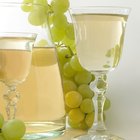
Types of Bacteria in Wine

How to Make Alcohol at Home
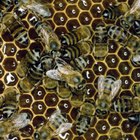
What Causes Honey to Ferment?

What Is the Primary Difference Between ...
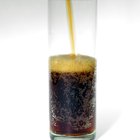
Is There Glucose in Soda?

How to Make Sand Plum Wine

Why Does Wine Not Expire?
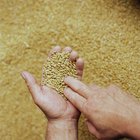
How to Ferment Grains

How to Determine if Wine is Sweet or Dry

Can You Proof Yeast in Warm Milk?

What Is the Difference Between Wine & ...
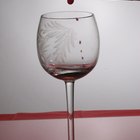
Types of Amber Wine
Does Lemon Juice Go Bad If Not ...

Does Yeast Cause Holes in Bread?

Acne & Brewer's Yeast

Baking With Juice Concentrates

How to Reduce Wine With Sugar to a Glaze
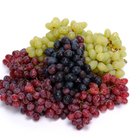
Types of Wine Listed Alphabetically
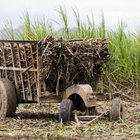
What Liquors Are Made From Sugar Cane?

How to Make Hard Cider With Baking Yeast
References
Writer Bio
Dr James Holloway has been writing about games, geek culture and whisky since 1995. A former editor of "Archaeological Review from Cambridge," he has also written for Fortean Times, Fantasy Flight Games and The Unspeakable Oath. A graduate of Cambridge University, Holloway runs the blog Gonzo History Gaming.
Photo Credits
Comstock/Comstock/Getty Images